I love terrariums. In creating these tiny worlds, the possibilities are endless. Well, except for the possibility of creating a giant world. That’s part of the allure of these little beauties, I think — the ability to maintain a ‘whole’ garden at a darling scale. If managing a house full of indoor plants still proves too much, there’s always the magic and charm of the terrarium garden.
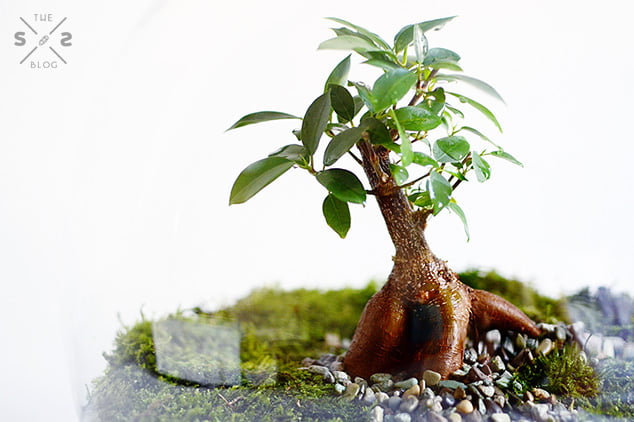
Ficus retusa in a terrarium. Source: Wee World, used with permission.
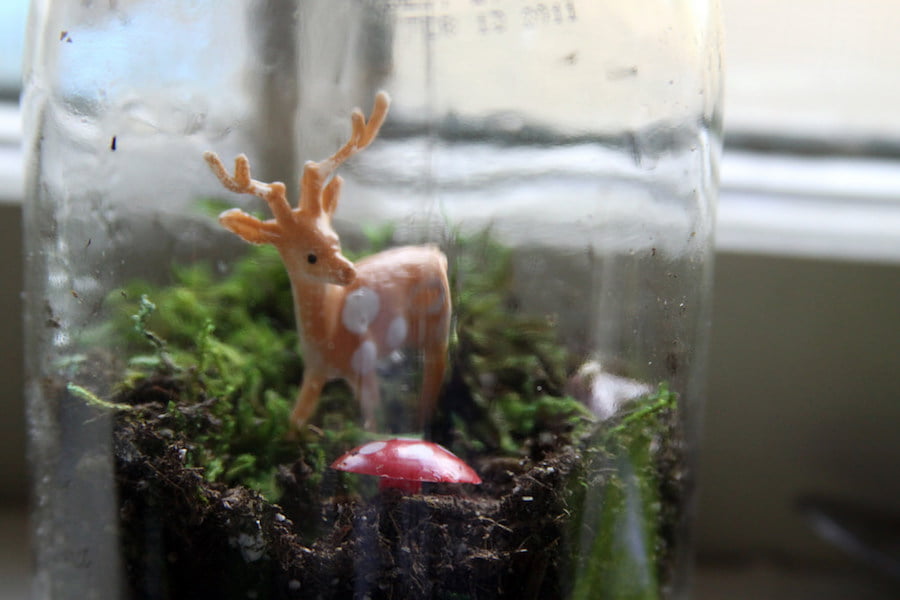
A living diorama. Source: Lindsey Turner (CC BY 2.0)
History of the terrarium
So the story goes (thanks, wikipedia), the terrarium was invented in the early-mid 1800s by English doctor, Nathaniel Bagshaw Ward. Ward had a thing for observing insects in jars, and noticed that the moisture and humidity maintained within a sealed jar was conducive to both germinating seeds and keeping plants alive on long voyages to the British colonies.
Terrariums have a special place in Australia’s history. Originally called ‘Wardian cases’, they were used for exporting plants from London to Sydney during the colonial years. Likewise, they’d be used to transport native Australian specimens back to England.
Types of terrariums
Terrariums (also terraria) come in two forms, closed and open, each creating conditions suitable for different types of plants.

Ficus retusa in a closed terrarium. Source: Wee World, used with permission
Closed terrariums: Like the original Wardian cases, closed terrariums are more or less sealed, keeping in moisture that evaporates and condenses as external temperatures fluctuate. Thus, they tend to be humid on the inside, as well as sheltered from wind — ideal for mosses, ferns and other tropical plants.
They’re not completely isolated systems, though. Once in a while, closed terrariums should be opened to let excess moisture evaporate. This helps prevent the growth of mould or algae on the glass (or on the plants!). If the terrarium isn’t completely airtight, it may also need to be watered to prevent it from drying out over time.
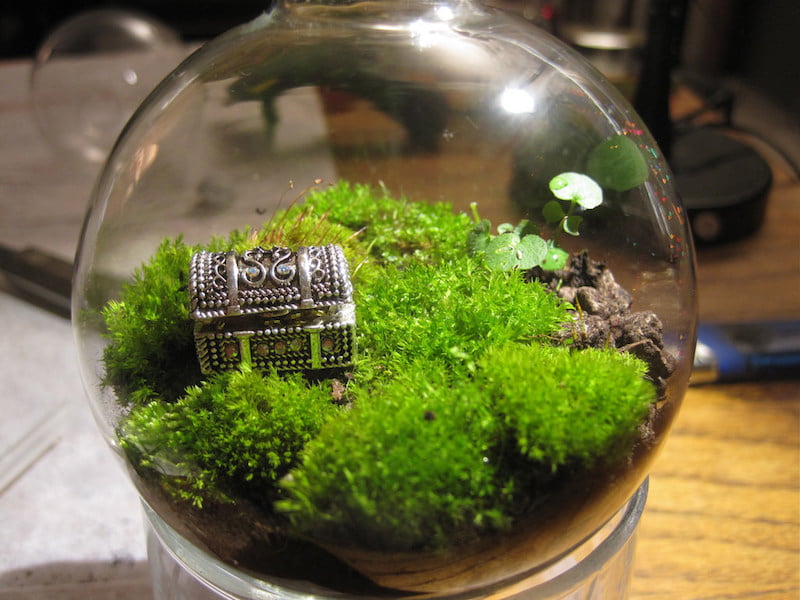
Treasure chest and moss terrarium. Source: Elias Gayles (CC BY 2.0).

Closed and open terrariums on display. Source: Isaac Benhesed (CC0)
Open terrariums: Open terrariums, on the other hand, don’t trap much humidity at all. This makes them great for plants, like succulents, that prefer drier conditions and fresh air. Naturally, they’ll need more attention than their closed counterparts in the watering (or misting), sunlight and temperature departments.
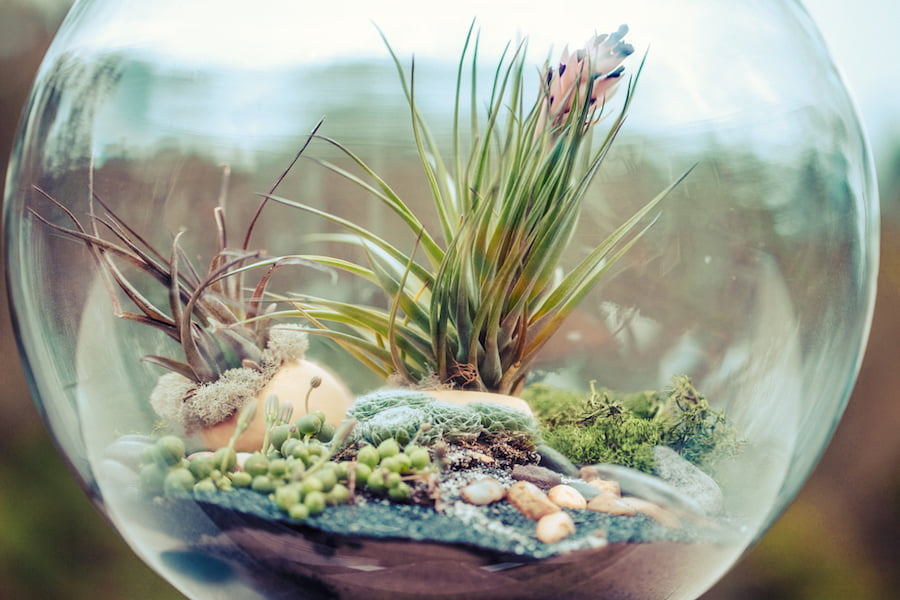
Tillandsia and succulents in a fishbowl terrarium. Source: Sonny Abesamis (CC BY 2.0).
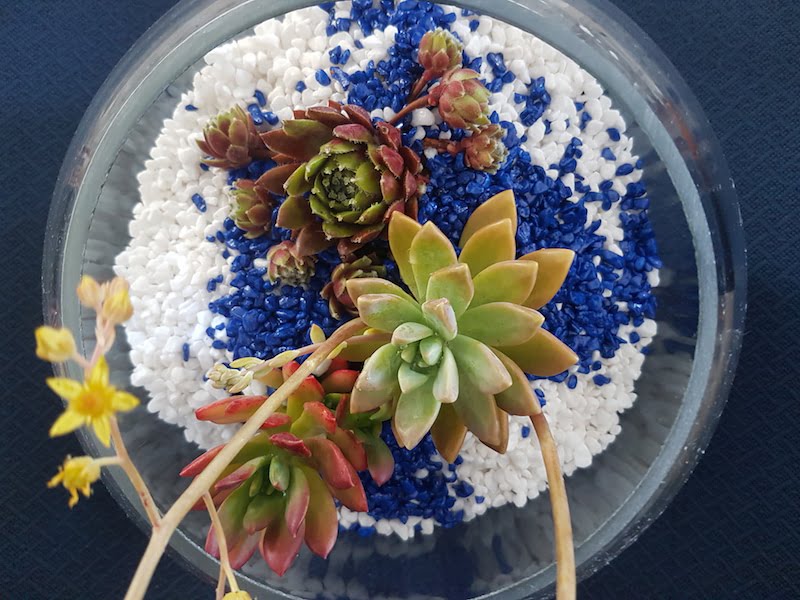
Succulents in a fishbowl terrarium. Source: Domus Nursery, used with permission
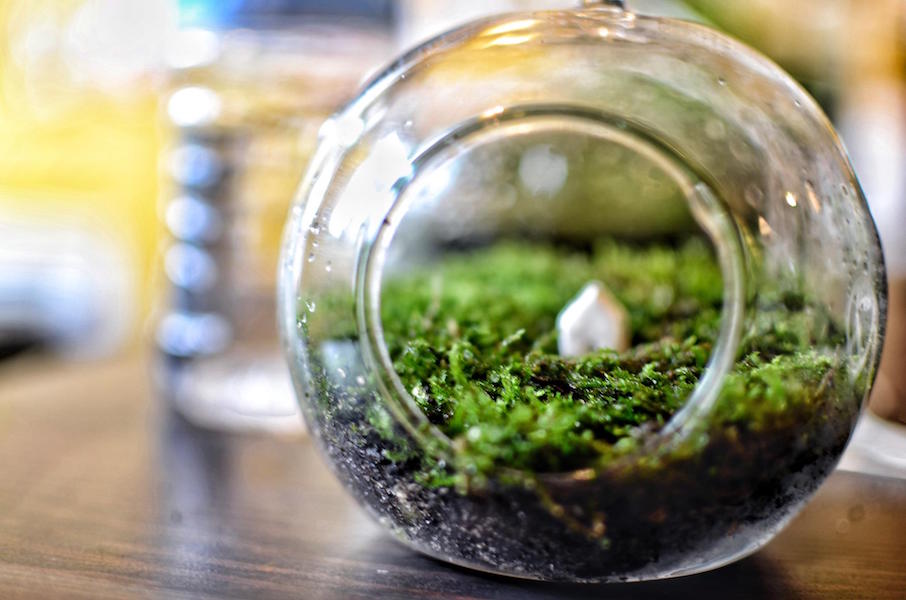
Tiny house on an open moss terrarium hill. Source: Wee World, used with permission
Making your own terrarium
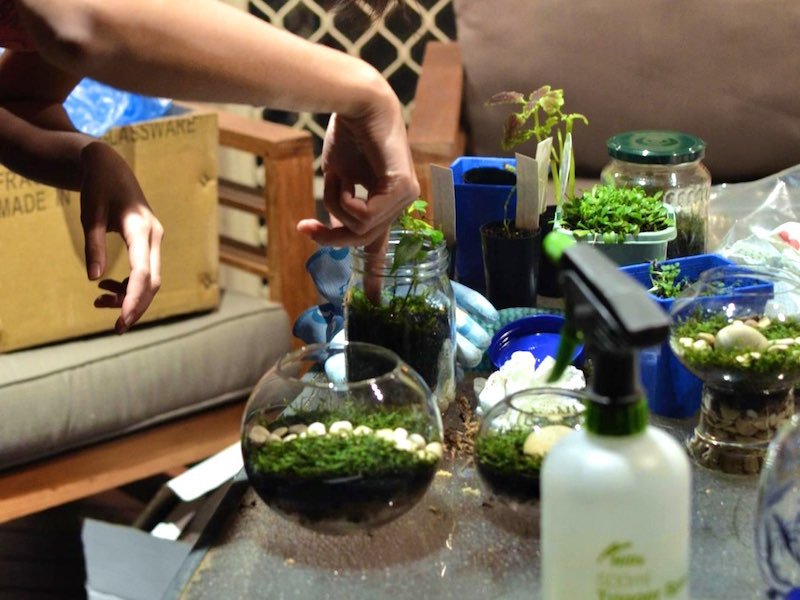
Constructing tiny worlds at a terrarium party. Source: Wee World, used with permission
Making a terrarium is easy and fun. And messy! A quick search of Google or YouTube will turn up hundreds of tutorials and DIY demonstrations on how to make your own tiny world. So let’s just cover an overview.
The essential parts of a terrarium are:
A containerSubstratesPlantsDecorations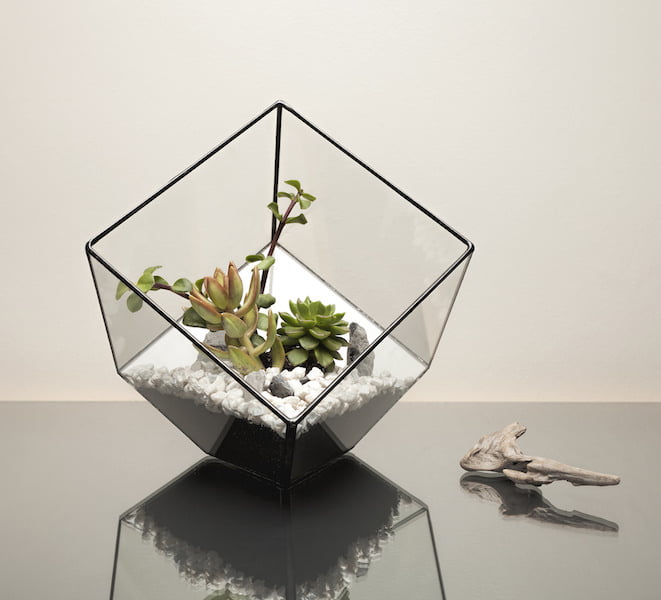
Cube terrarium container. Source: Urban Botanist (CC BY 2.0).
Choosing a terrarium container
Terrarium containers are usually glass, but you can use plastic too. You’ll get by as long as it’s transparent (to let sunlight through), holds water, and won’t deteriorate quickly. Floristry supply stores often sell sealed and open glass containers designed for holding plants but, at a pinch, you can recycle old bottles and jars found around your home or at the op-shop.
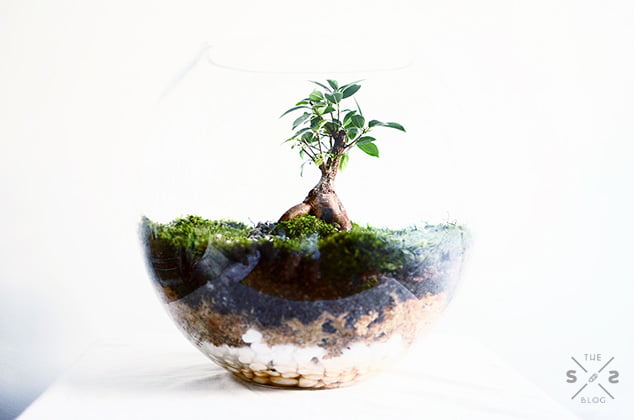
Substrate layers in a bonsai terrarium. Source: Wee World, used with permission
Selecting the right terrarium substrate
Substrates will often vary with the types of plants and style of terrarium you create. A terrarium for bonsai or tropical plants, for example, typically needs the full suite of substrates: activated charcoal (to help maintain pH levels), gravel or small river stones (for drainage) and potting mix (as a growing medium). However, succulent or tillandsia terrariums – with their reduced need for moisture – can survive quite comfortably with minimal potting mix and sand (or stones).
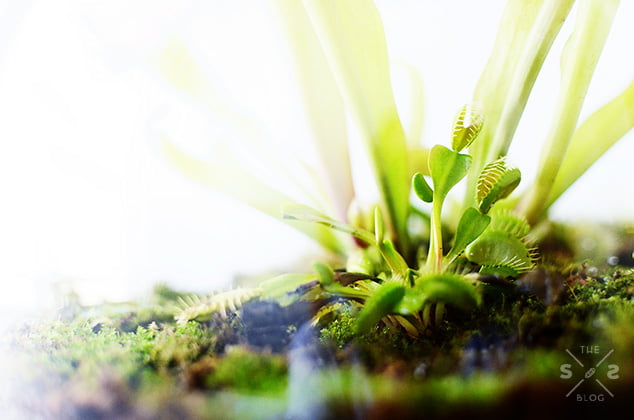
Venus flytraps in a tiny savage world. Source: Wee World, used with permission.
Choosing plants for your terrarium
Before you make or buy a terrarium, consider where in your home or office you plan to keep it, as this may affect the plants you choose. For example, a lucky bamboo (Dracaena sanderiana) would do best in bright, indirect sunlight, but if your home is rather dark at the best of times, you might find a bromeliad or moss terrarium easier to keep alive.
The size of your terrarium and the amount of care you’re willing to invest will also limit your choice of plants, as fast-growing species like a Benjamin fig (Ficus benjamina) or golden pothos (Epipremnum aureum) could easily outgrow its container in a matter of months if left unpruned — that said, your mileage may vary: I once had a healthy golden pothos in a small closed terrarium for almost 3 years before growing it as a regular potted houseplant.
Here are a few tough little plants to get your terrarium started:
Sempervivum succulents — tolerates drynessTillandsia air plants — tolerates (prefers) drynessPonytail palm (Beaucarnea recurvata) — tolerates low light and drynessSpider plant (Chlorophytum comosum) — tolerates low lightHaworthia succulents — tolerates lower light than other succulentsFerns — tolerates humidity and moisture, great for closed terrariumsSansevieria snake plants — tolerates low light and some neglectMondo Grass (Ophiopogon planiscapus) — tolerates low light and dryness
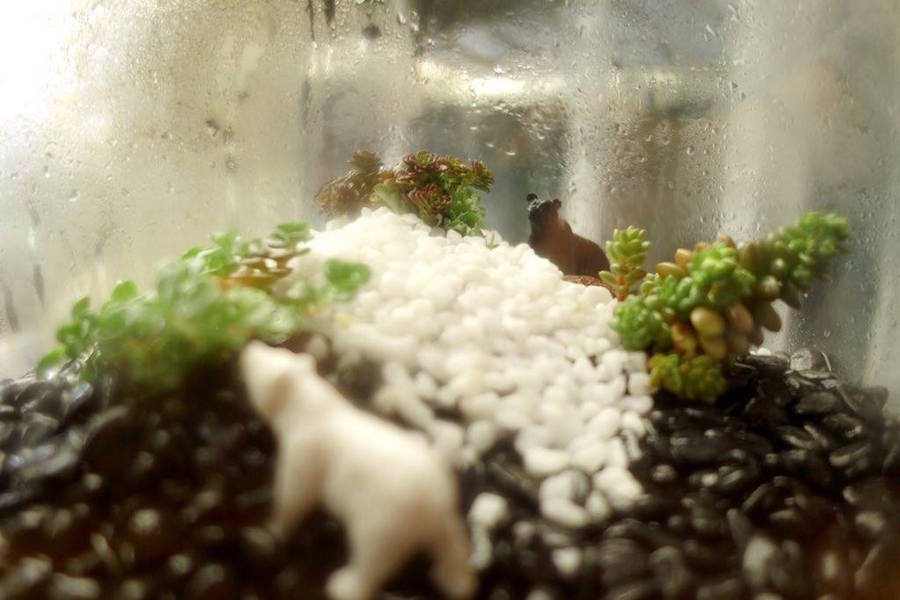
My yin-yang bear diorama in a succulent terrarium.
Decorations in your terrarium
Small plastic toys are a common favourite in modern terrariums, but natural items like shells, coral, fossils, bones, wood and interesting rocks make excellent additions too. Decor, of course, is optional, but adding tiny inanimate trinkets can breathe that extra bit of life into your tiny world (ironic, isn’t it?). They transform an arrangement of plants into a scene, a setting that fuels wonder and imagination.
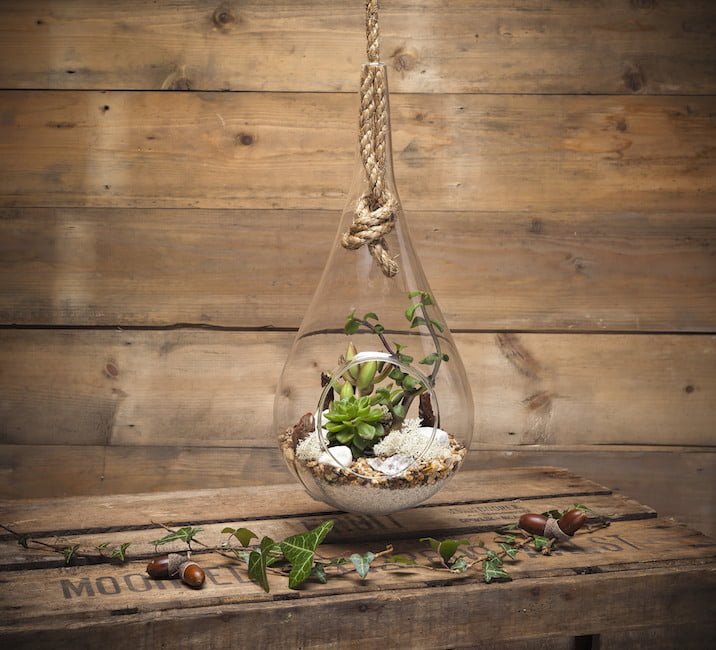
Succulents in a hanging teardrop terrarium. Source: Urban Botanist (CC BY 2.0).
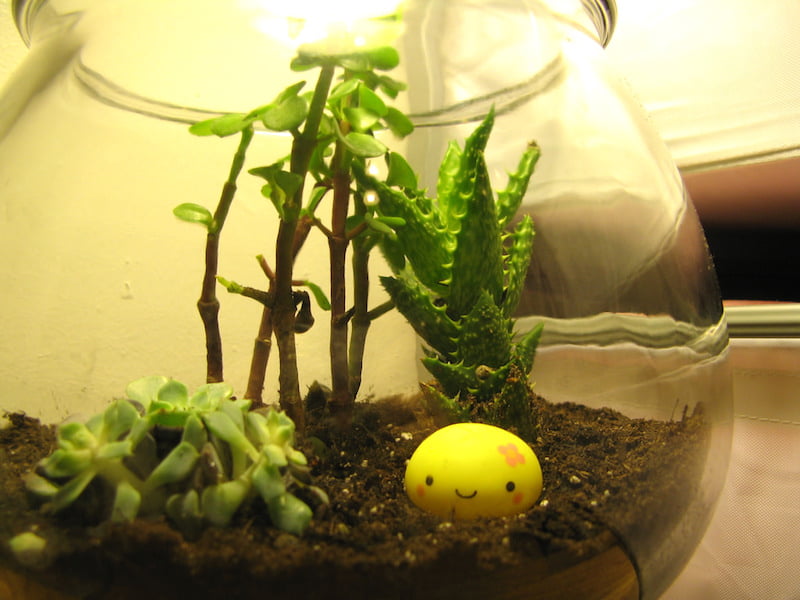
Mochi decoration in a terrarium. Source: Medoria Star (CC BY 2.0).
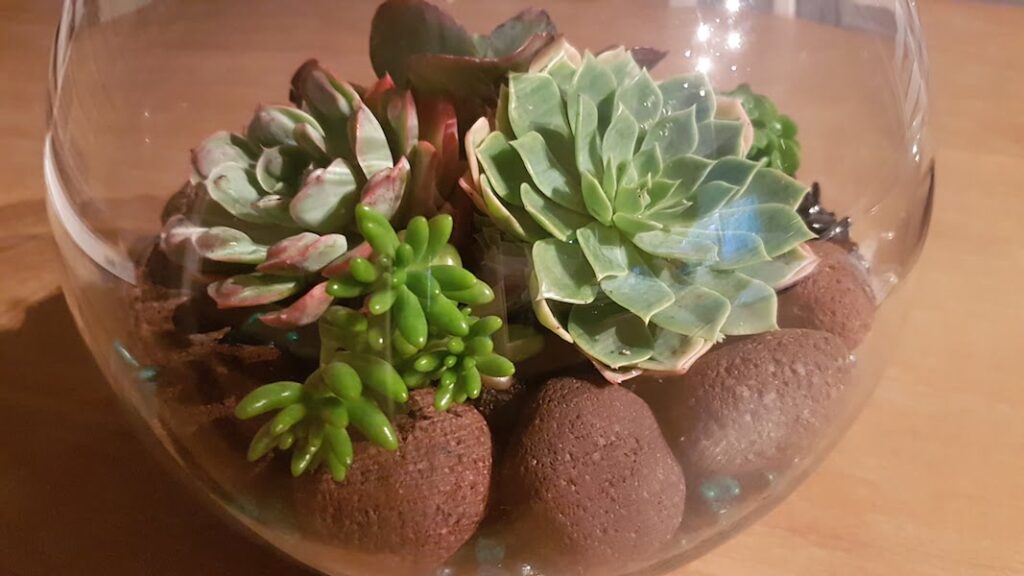
Large rocks for a desert motif. Source: Domus Nursery, used with permission.
